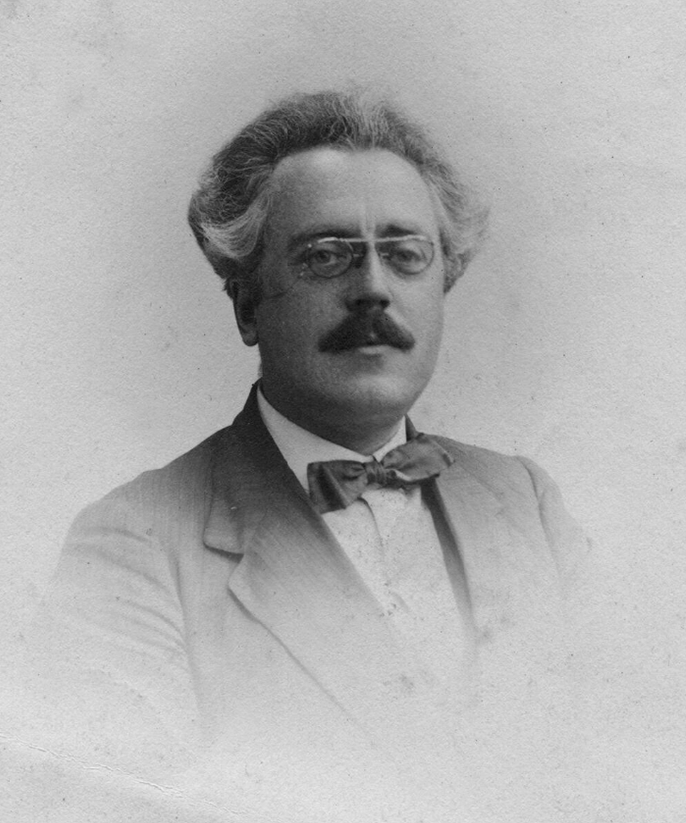Frank Bridge

© National Portrait Gallery, London
- Born: February 26, 1879, Brighton, England
- Died: January 10, 1941, Eastbourne
The Sea, Suite for Orchestra
- Composed: 1911
- Premiere: September 25, 1911 at the Promenade Concert at Queen’s Hall in London, Henry Wood conducting
- Duration: approx. 22 minutes
Frank Bridge was one of England’s leading musicians during the years before World War II. Born in Brighton, where he played violin as a boy in a theater orchestra conducted by his father, he entered the Royal College of Music as a violinist but turned to composition after winning a scholarship in 1899 to study with Sir Charles Villiers Stanford. After graduating, Bridge played in the Grimson Quartet as a violinist and as violist in the Joachim and English string quartets. He also earned a reputation as a conductor good enough for Thomas Beecham to appoint him as his assistant with the New Symphony Orchestra in 1906. Bridge thereafter conducted opera at the Savoy Theatre and at Covent Garden, and he appeared at the Promenade Concerts and with such major orchestras as the London Symphony and Royal Philharmonic. In 1923, he toured the United States as conductor of his own music, giving concerts in Boston, Cleveland, Detroit and New York. When he returned to England, he bought a small country house at Friston in Sussex, near Eastbourne, and spent most of his remaining years there, composing, accepting an occasional conducting engagement and guiding the progress of his gifted student Benjamin Britten.
Bridge began composing around 1901. Although he first became known as a competent dispenser of salon music, he was also a highly skilled composer of chamber, vocal and orchestral music from his earliest years. His first works show the influences of Stanford, the Impressionists and Delius, and are expansive in scale and warm in expression. Although Bridge was a pacifist and therefore exempt from active duty in World War I, he was profoundly affected by the conflict, and the years after the war saw an evolution in his style from the conservative idiom of his early compositions to a more modernistic expression occasionally approaching the iconoclastic musical language of Schoenberg and his Viennese colleagues. Bridge’s catalog includes an opera (The Christmas Rose), three symphonic poems, concerted works for cello and piano, 18 independent orchestral scores, much chamber music, four dozen songs, some 20 choral works with and without accompaniment, and pieces for piano and organ.
One of the decisive experiences that ignited the youthful talent of the breathtakingly precocious Benjamin Britten was a concert he heard at the 1924 Norwich Triennial Festival, when he was 11, at which Frank Bridge conducted his own orchestral suite The Sea — “I was knocked sideways,” Britten recalled. He became a student of Bridge's three years later and remembered that “even though I was barely in my teens, this was immensely serious and professional study. The lessons were mammoth, but I badly needed this kind of strictness. It was just the right treatment for me.” Bridge remained Britten’s mentor, even after he went off for formal study at the Royal College of Music in London.
The Sea, the work that set Benjamin Britten on his path to the pinnacle of English music, was the most successful of Bridge’s two dozen or so orchestral compositions, many of which are programmatic or referential in nature. He composed it in 1911 and the score was premiered in 1912 conducted by Henry Wood at one his Promenade Concerts, the ambitious series Wood had established two decades before and that continues today as one of Britain’s most important musical events. Wood invited Bridge back to conduct the work himself the following season, and they both led The Sea frequently at the Proms thereafter and, as Britten’s experience in Norwich suggests, widely across Britain. Bridge also recorded the work with the London Symphony Orchestra in July 1923 and that autumn featured it on his American tour, introducing it to the orchestras and audiences of Cleveland, Boston and Detroit. He reported that the audience in Cleveland was “so attentive. They listened like mice…. It was exciting. The happiest thrill I ever get is when the players are as sympathetic and enthusiastic as the audience. I get something out of that which is almost impossible to put into words.”
Bridge gave the following description of the suite’s four movements: “Seascape: Paints the sea on a summer morning. From high drifts is seen a great expanse of waters lying in the sunlight. Warm breezes play over the surface. Sea-Foam: Froths among the low-lying rocks and pools on the shore, playfully not stormy. Moonlight: A calm sea at night. The first moonbeams are struggling to pierce through dark clouds, which eventually pass over, leaving the sea shimmering in full moonlight. Storm: A raging storm. Wind, rain, and tempestuous seas, with the lulling of the storm an allusion to the first movement is heard and which may be regarded as the sea-lover’s dedication to the sea.”
—Dr. Richard E. Rodda